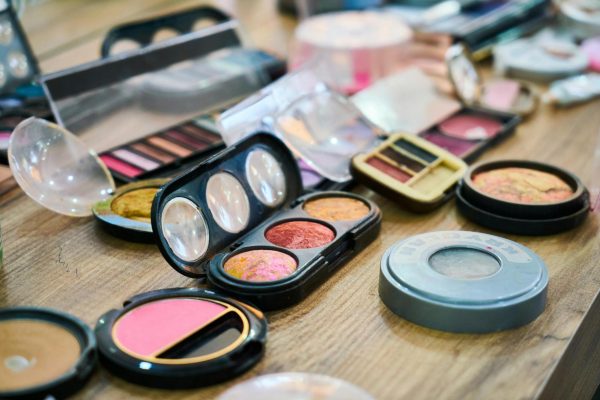With the rapid integration of social media into our everyday lives, a booming market has emerged, targeting young consumers. This deliberate targeting of the youth and, most prominently, teenage girls has not only contributed to the mass overconsumption of goods in America but has also weaponized insecurities to market to them. Most marketing targeting teenage girls is beauty and skincare-related products pushed out by influencers who often get paid commissions by brands to advertise their products. The various products range in necessity, utilizing the brand’s status and image to persuade buyers while making a pretty penny. These products are all marketed as something the buyer needs. Regardless of whether that’s true, teens still learning and trying to transition into adulthood/young adulthood fall victim to this ploy.

On average, Americans consume more than their weight in products every day, so it makes sense that American teens would follow suit. In a capitalist society, the consumer-supplier relationship is vital to upholding the economy, and the marketing companies use to promote their brand and image is everything. In an age where social standards and morality are more important than ever in the eyes of the consumer, brands are now pivoting to reflect these values. This adoption of beliefs is largely seen in beauty brands with a concentrated demographic of teens and young adults who value the beliefs and messages a brand promotes and with whom brands partner and trust to sell their products. So when a teen gets an ad from their favorite influencer telling them they need this 10-step skincare routine, the consumer will likely fall into the trap, purchasing more products that are not needed but wanted.
Although on the surface, some may argue that, at best, this marketing is ethos-oriented with some mixed morals, there is a much deeper issue that has impacted many teen girls and their mental health. As recently as 2023, a survey of teen girls showed that confidence levels have decreased significantly, and those with high uses of social media have even less confidence, indicating that social media’s impact on young girls is only getting worse as time and technology develops. With this rising lack of confidence in teens paired with ads targeting and potentially creating insecurities all over their feeds, it is not difficult to see this combination’s devastating impact on a teen’s self-worth and self-image.

Despite all of this, some teens don’t recognize they are overconsuming or don’t realize their lives are consumption-based and subconsciously altering their ways of thinking. Whether they see it or not, participating in trends and buying products is overconsuming, and it does have consequences outside of environmental concerns that could ultimately affect their whole perspective on how they view themselves and others. Outside of teens, even young children, specifically elementary and middle school girls, are now a part of the consumer cycle for products way out of their age range. The most recent example of this is at makeup counters across America, with young girls asking for Drunk Elephant retinoids and serums made to promote anti-aging with highly potent formulas not suitable for children. Social media marketing and fun packaging caused the popularity of Drunk Elephant and naturally enticed younger buyers to gravitate to the product. The new promotion of skincare for young children on social media specifically has also contributed to the rise of brands like Drunk Elephant. Now, before kids can even make it to high school, they are expected by others, due to social media, to have skincare routines, dress a certain way, wear a specific brand, and ultimately look a certain way, all before the age of 12.
In a society where social media now holds more power than ever, it’s worrying to see the impact this technology has had on newer generations, with each generation growing more entrenched into a life of social media. This continuously growing technology has directly influenced the increase of overconsumption amongst teens and children but has, most importantly, negatively impacted countless youth and their perceptions of themselves and others. It is clear that social media is not going anywhere and is undoubtedly here to stay, so the most important thing to combat the creation of negative mentalities and perspectives is to disconnect every once in a while, practice self-love and acceptance, and evaluate “do I need this” before making your next purchase.








